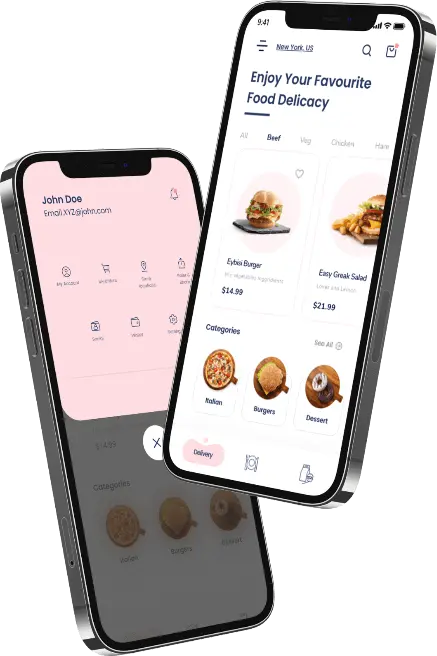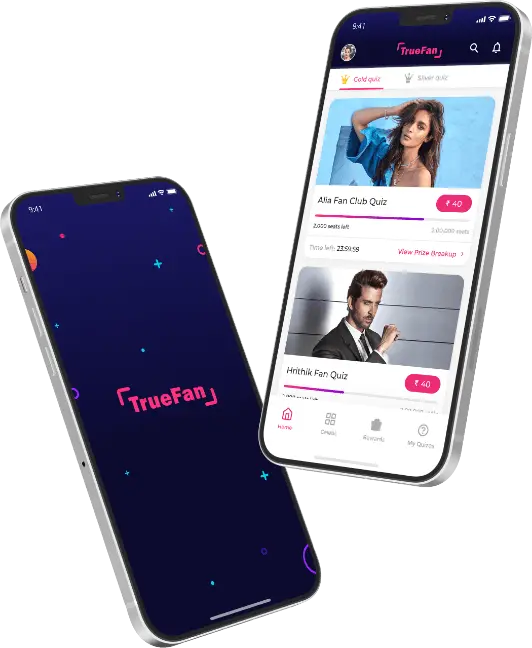21 Dec 2022
The Stages for iOS App Development: From Ideation to Launch!
Shivani Singh

iOS app development is a dream for many!
And turning this dream into reality is what Techugo does. From ideation to support and maintenance, we don’t say ‘No’ to providing you with the utmost convenience.
Although the app development procedure is quite challenging and requires our most time and effort, we feel happy to bring a smile to your face with our final products. Want to know how we develop your dream iOS application?
A complete guide is here to provide you with the development stages. Whether it be an iOS or Android development, we follow the same terminology for every mobile platform to bring a drastic shift.
So, are you ready to turn your dream with our code?
If yes, this is all that matters to us.
Let’s look at how an app development process should be efficient and how to make a real app starting from scratch.
You’ll discover that it is possible to launch a new website or mobile app without spending much money, and it can be done quickly whether you do an iOS and Android app development, or build solutions for Windows. Each custom app is developed in five easy steps that aim to save money and maximize your return on investment.
Why must Businesses choose iOS App Development?
There are many reasons why iOS app development is a good choice for businesses. The first and most relevant is iOS is the operating platform for the iPhone and iPad, the two most popular mobile devices available.
Want to learn more reasons?
- iOS is a closed platform that gives businesses greater control over their apps, data, and services.
- The App Store is highly curated and can offer your app an advantage.
- Apple devices are well-known for their security and quality, which can provide peace of mind for businesses investing in iPhone app development services.
- When developing iOS, businesses can use iCloud’s power and other Apple services.
General App Development Process that Techugo Follows
More than creating a mobile app and releasing it to a digital marketplace. The procedure requires planning, research, skills, and, above all, a clear focus. Fortunately, Techugo, the top iOS app development company, follows everything that ensures success.
Want to learn the five stages that make us a tech giant in the industry? Here are they:
- Planning – Before launching an app, you need to know whether the app resolves users’ problems, who it will target, what features will be included, and so forth. It is also essential to conduct extensive market research to ensure that the app will be competitive in its niche or market. This planning phase includes gathering all requirements for the subsequent mobile app development process.
- Design – This phase is where the design team creates the user interface and user experience. That’s the look, feel, and navigation. The design is then transferred to the mobile app developers.
- Development – From the design, this phase creates a functional app.
- Testing – After completing the development, we test the application. To ensure that the app functions smoothly and is free from bugs, QA engineers review it.
- App Launch and Maintenance – After the app has been tested and approved by a client like you, it is ready to go on the market. This does not mean that the app development is complete. Every application needs to be maintained and updated frequently to meet changing customer and business requirements. This phase is just the beginning of a new development cycle.
Want to learn it in an elaborated way?
Read further!
What Leads to an Exciting Digital Solution?
Stage 1: Research
Research and analysis are the first milestones that you have to cross to build your own iOS app. Here is the way you can research the market.
- The app market: Apple’s App Store has millions of apps. So, it needs to involve a deep dive into the market to know how your app will attract customers from all over the world. Do you have any solutions to it which is unknown to your users or any other thing that builds its recognition and gains an increased number of downloads?
- Your target audience: Apple users are a specific group. You need to keep this in mind as you plan your iOS app development. Communicating with this niche and understanding it in a way that speaks directly to it is crucial. iOS users appreciate cutting-edge design and modern key features. They also value being at the forefront of mobile app user culture.
- You can spy on your competitors by browsing similar apps to see their weaknesses and strengths. Find out what your industry offers and create a better product based on your audience’s preferences, likes, and project requirements.
Stage 2: Idea Creation
Now, here comes the next stage, “Idea creation.” How to create the idea is discussed here.
These are the three things we recommend you focus on when app development is underway if you have a lower budget.
- MVP – Minimum viable product to enter the market
- Mid-term vision (1 year).
- Vision for the long term (3-5 years).
Tip: Make sure your product/project is clearly defined.
Vision for the long term
It is crucial to write down your long-term vision. This will help you choose the best technology stack for development and determine how many developers you’ll need over the long term and what skills they should have, like iOS, Android, or Web. But ensure to prioritize these in pre-MVP or post-MVP sprints.
Three things should be considered when creating the middle-term vision.
- What are you going to focus on in the first year?
- What speed will you make progress?
- How can you finance your entire business?
Did you answer the above questions? Perfect!
These answers will help you decide how many resources to allocate from the start. Of course, the app development phase will have the most expensive. You can, however, start preparing data and backend to integrate APIs into other stages you plan to build during the next phase.
Minimum Viable Product – MVP
A successful start requires an MVP. Why?
- The time it takes to develop a product before it is ready for the market directly affects its robustness and functionality. This phase is when you have very high expenses but little income.
- However, cutting costs as much as possible may not be a good idea. Users may lose trust if they don’t have the essential functions.
Many companies use MVPs for many reasons.
- To gather market feedback.
- To gain early users and to find early adopters who will purchase the primary product.
- To test marketing channels.
External consultation is always a good idea. This can be done by UX designers, user researchers, or people not directly associated with your product. These people can offer unbiased opinions, vital feedback, and different experiences.
This is the end of the initial phase of a website and mobile app development. The next stage is designing. One common practice is to outline during idealization. So let’s get to drawing the idea.
Stage 3: Design
This stage is where you need to create a development team. This usually includes a product owner and project manager, 1-2 app developers per platform (Android or iOS), backend, UI/UX designers, and 1-2QA engineers. Once your team is established, you can start designing.
Four steps are required for the design stage:
Clarifying your requirements
After reviewing the initial project data, the team asks specific questions about the context of the client during the workshop.
UX planning
We are currently creating an app architecture to understand the concept better and preparing the prototype of the future mobile app with as much detail as possible: each button, pop-up, and a text field.
The dedicated team reviews and categorizes all information provided by the client and fills in any gaps. Then, they begin building the structure, creating happy passes and user flows, and dealing with any edge cases. To turn your business idea into a reality, we move towards UI.
Design and creation of UI
It is essential to consider the tastes and preferences of the client. But it’s even more important to think about the target audience. Once the main screens have been approved, we can create the style guide for the project and render the rest. You must follow and well-accompany the client’s brand book or unique corporate style.
Maintenance and testing
The designer’s work continues when developers have all the prototypes for their mobile apps. The designer is also available to accompany the team during the mobile app development process to help them understand the logic and structure and find a balance between beauty and practicality. Instead, they check the final product for conformance to its design and ideas.
These steps enable you to create a custom, high-quality app to help you achieve your business goals and reach your target audience.
- The design stage’s output:
- UI/UX final blueprint – wireframes and concepts, prototypes, and testing in the format.
- A style guide (specification about fonts, sizes, styles, and states of elements)
- Clickable prototype (optional) and an application scheme (optional, upon request by the client
- Additional support for the development team
Also Read: How To Make UX Design To Work In Your App’s Favor
Stage 4: Development
Teamwork is a critical ingredient in excellent software development. A trusting relationship between the client and team is key to a successful outcome.
Techugo uses an agile development methodology while focussing on strategies for flexible planning, progressive development, and early deployment. The top iPhone app development company also allows for constant enhancements. A mini-release is made available to the client at the end of each sprint for their review and testing.
Native development is possible using the following programming languages: Objective-C for iOS, Swift for Android, Kotlin, and Java for Android. Furthermore, React Native and Flutter are the best options for cross-platform software development.
You can use these steps to describe the development process:
1. The app’s functional requirements, such as orientation, flips, and amount of business logic, are what we use to determine application architecture.
2. We can select the right technology to support the project.
3. We can determine if the backend supports the app’s functionality when there are clear visuals and other requirements. There will be different requirements depending on Android or iOS. There are two main methods to set up a backend.
- SaaS backends – Firebase, AWS Mobile Hub and CloudKit, Kinvey. Parse. Rest API for basic app MVP
- A custom backend is better if you expect the app to grow in features and users.
4. We select the frameworks, libraries, and off-the-shelf solutions for the app. Frameworks are infrastructures that speed up code writing on iOS and Android, such as DI and Binding. For specific functional frameworks, see:
- For Android – Payment gateways, social integrations, etc.
- For iOS – CoreLocation, HealthKit, etc.
5. If necessary, the team is involved in API design. You can create an API to allow your application to communicate with the system or third-party software if you have an existing system.
6. Once we have figured out the network model, we can design the database and draw the diagrams to facilitate the database creation.
7. We can assist with detailed specifications and design if necessary. As experts in the field, we know system limitations and the best UX/UI solutions. This allows us to provide valuable input to business analysts and designers.
8. The team provides the best iOS app development services and configures CI/CD, creates repositories, and builds projects through Gitlab pipelines.
Step 5: Test the mobile app
Once the app has been built, the development team completes the testing phase of the mobile app development project. Our testers and QA supervisors perform these tests:
- Compatibility testing: Run the app on various devices and screen sizes.
- Interface testing – Testing the navigation, menu, and button performance
- Device compatibility testing – How the app looks on different screen sizes.
- Low-level resource testing – Examining the app when it is running on low battery or slow Internet connection.
- Security testing – Quality assurance of sensitive data safety
- Beta testing – An initial focus-group examination of your app and receiving feedback.
Step 6: App Launch
The successful deployment to the App Store completes the development process for an iOS app. In reality, however, this process is always ongoing.
App maintenance begins with the app’s launch. This includes monitoring app usage via app analytics platforms, measuring its successes through KPIs, and patching any functional or security bugs that may occur at any time. It also involves updating the app features and interface in light of customer feedback, iOS requirements, and new updates.
Factors that Influence the Cost of iPhone App Development
Your app should have the features, functionality, and cost-affecting factors that meet your customers’ needs and demands. Also, it should have additional business-driven features such as navigation and payment gateways.
These business-driven features are a significant part of estimating your iOS app budget.
The cost of your iOS app will depend on several factors
1. App Complexity: A simple app will cost less than one that is more complicated. But even simple apps can be costly if they need more custom work or integrations to third-party services.
2. App features: Each additional feature you add to your app will raise its development costs. Therefore, it is crucial to consider which elements are essential and which ones can be omitted.
3. Platforms: It will usually cost more to have your app available on iOS AND Android than if you only develop for one platform.
4. App Quality: This will require a more expensive product than one that is just as good but with expert-level code and a user interface.
5. Team of Developers Expertise: Hiring highly skilled and experienced developers will be more expensive than hiring less experienced ones. But remember that it is sometimes cheaper – sometimes, it is worth paying more for higher-quality work.
6. Market Research and Analysis: These actions significantly impact the pricing for iPhone app development in different areas. For example, iPhone app development in India proves light budget than in the USA. Market research includes competition analysis. It focuses on user devices, features they value, and factors that can hinder a positive user experience. This is accomplished by comparing apps that are similar to your idea.
7. Hours of development: How many hours an iPad app developer spends creating an iOS app can significantly impact the price. How much time is required for iOS app development depends on the number of developers. Your team will need additional expertise to complete complex iOS apps quickly. You might pay less if your project requires a small group.
8. Regular Maintenance and Updates for Your App: This is essential to ensure your app succeeds in the marketplace. If you do not have a software upgrade option, your app will not be able to keep up with technological advancements and times. Therefore, every program must now have a service tab with an update option. We will discuss this factor with you if you select Techugo, one of the best iPhone app development companies, as your technical partner.
9. Additional Add-ons to the app: Discuss your plans to add different components to your program with the developer. This will allow you to budget efficiently and help determine if the budget is appropriate for your needs. If you want to add new features to your app, it is essential to consider the budget perspective.
10. UX/UI Designs: The UI and the UX are essential when using an app on your tablet or phone. You should take the best iOS app development services to ensure your mobile solutions has the best UX and UI possible and succeeds in the Indian market. Numerous apps have failed because of poor user interfaces or user experiences. This is we recommend never to do it with an application.
iOS App Development Cost statistics
The global mobile development growth determines the popularity and cost of app development. There are over 7 million apps that users have already downloaded from the app store. Research on mobile app development shows exciting facts and costs for the industry in 2022.
These figures are based on different methodologies and sources.
- Each month, Google Play Store releases over 100,000 apps, and the Apple App Store over 30,000.
- App development is dominated by free apps. Freemium and free apps are the most cost-effective pricing strategies. Free utilities in the Apple App Store make up approximately 92%
- In 2020, the mobile app industry’s revenue was $581.9 Billion. This trend will continue if the industry’s gains don’t change.
- Market Research predicts that the mobile app development market will grow by more than 18.4% between 2026 and 2026, reaching an industry worth $ 407.31 billion in 2026.
- Nearly 90% of people spend their time on apps. Soon, mobile devices will be used for approximately 4 hours per day in which they spend 88% of that time on applications.
- 66% of smartphone owners download games. Over 95% of smartphone users also download messaging, communication apps, and web browsers.
The type of application will determine the cost of app development.
Also Read: App Development Cost : Explaining How To Evaluate Your Budget To Build An App?
Get in Touch with Techugo!
App development is an ongoing task. After the initial launch, you will continue developing new functionality and receive user feedback. Therefore, it is vital to have a team of experts who can guide you through every step of iOS app development and protect the integrity of your product.
Well, the guide consists of information that lets you understand the various stages of iOS app development, from strategy and identifying target audiences to release and ongoing support.
The mobile development team comprises over 200+ high-graded developers with diverse business backgrounds. We focus on your needs and guide you through each stage of app development.
Want to learn more?
Schedule a meeting with us today!
Get in touch.
Write Us
sales@techugo.comOr fill this form



 SA
SA  KW
KW  IE
IE AU
AU UAE
UAE UK
UK USA
USA  CA
CA DE
DE  QA
QA ZA
ZA  BH
BH NL
NL  MU
MU FR
FR 













